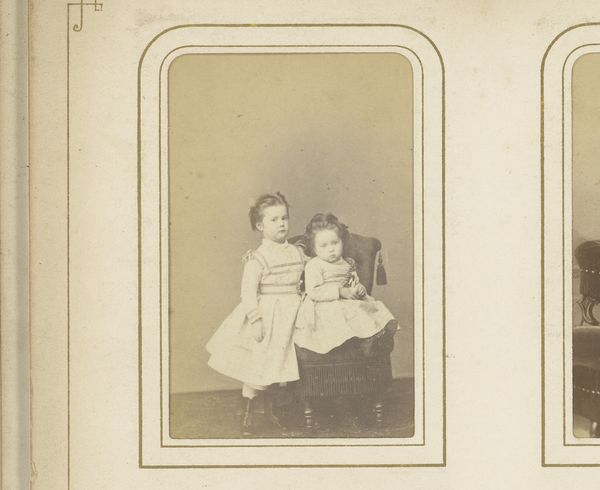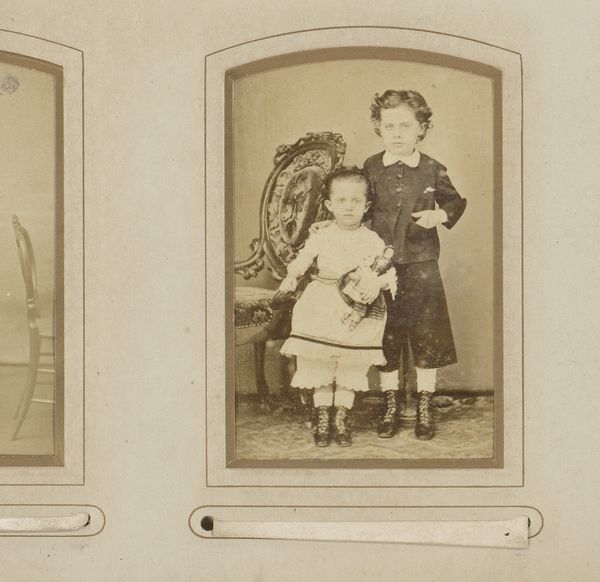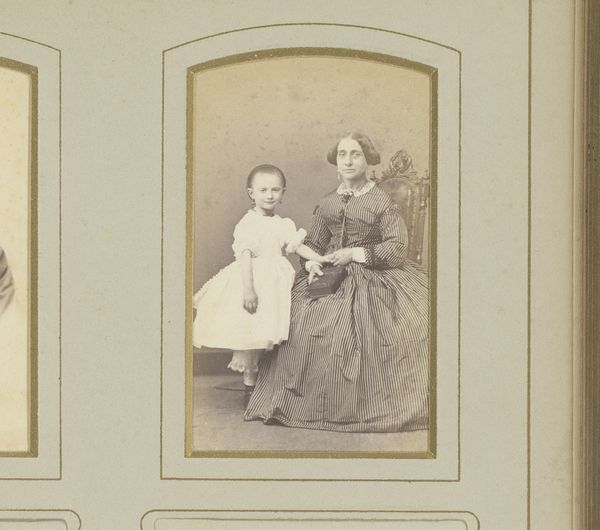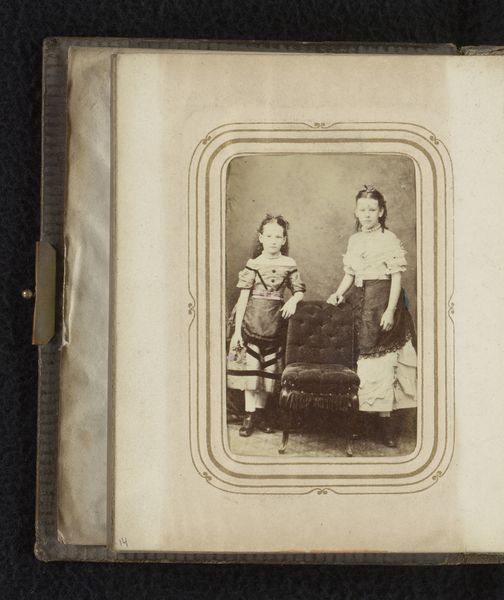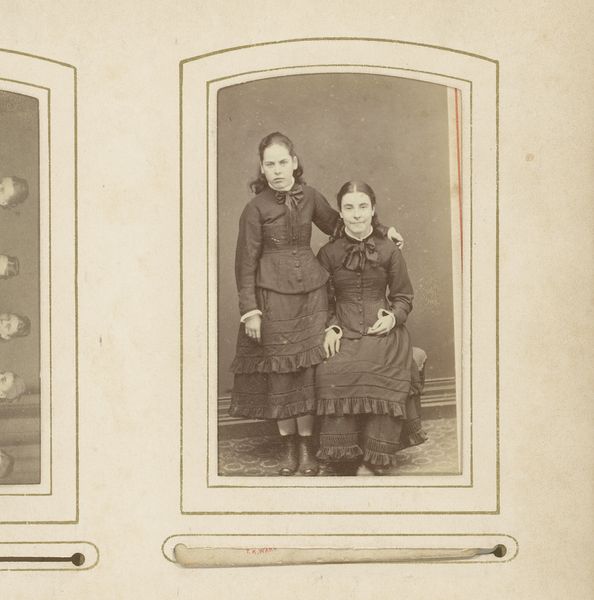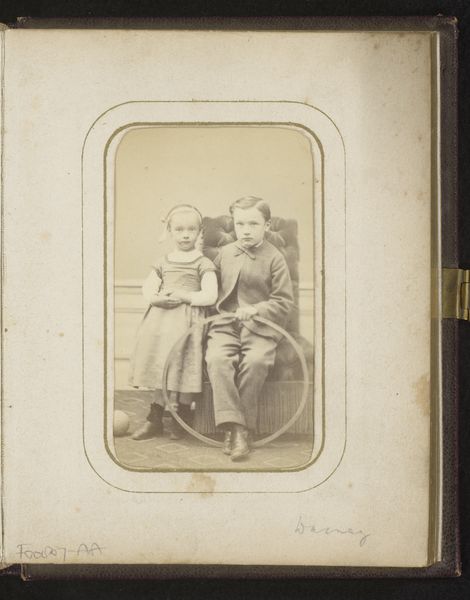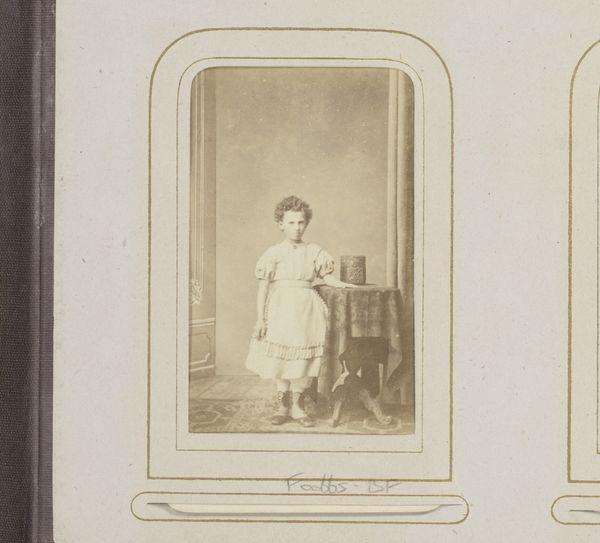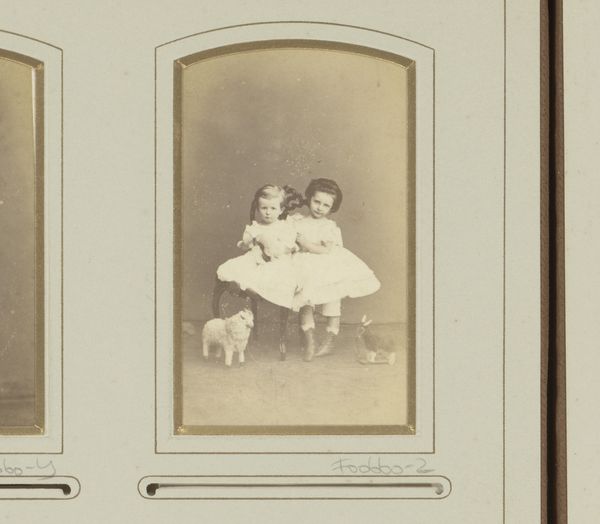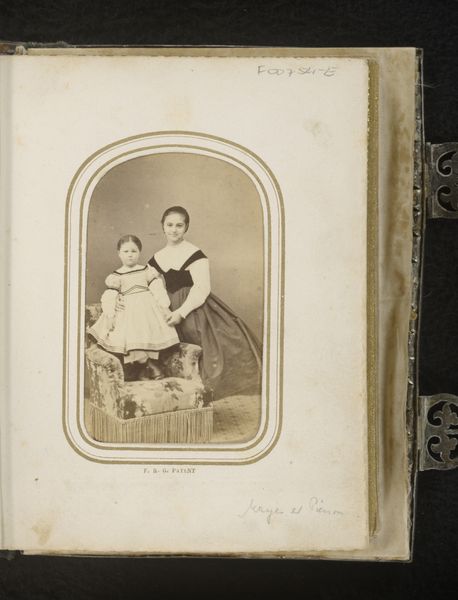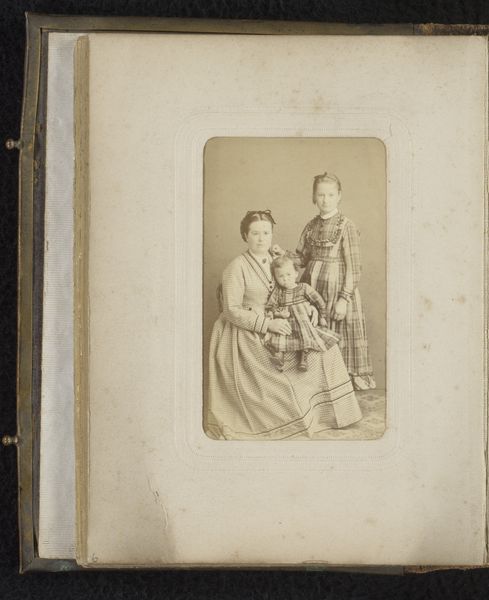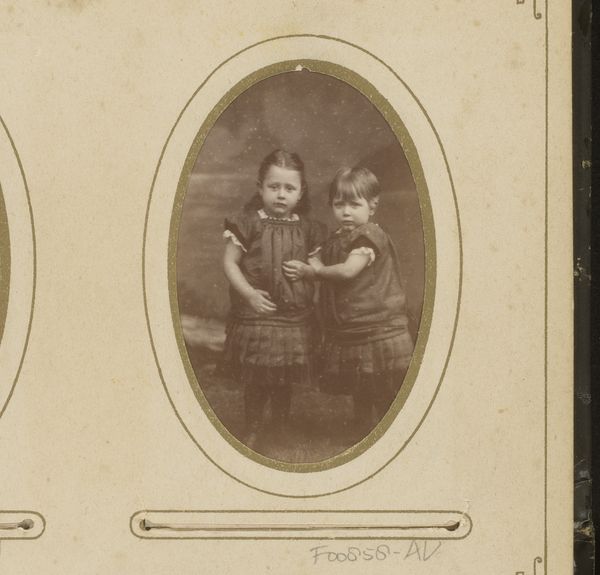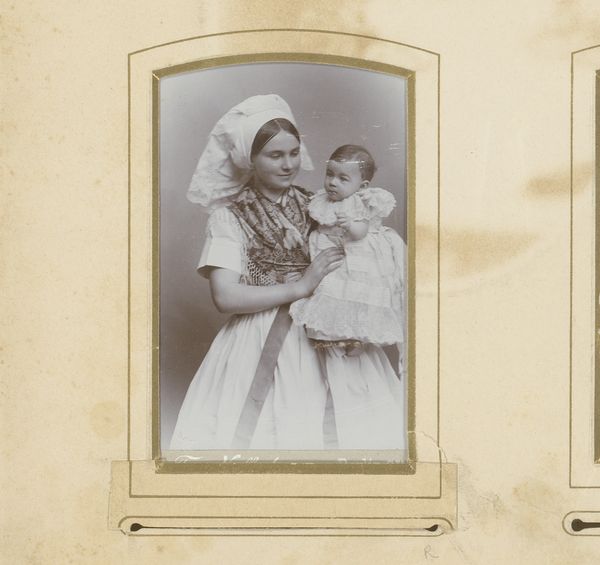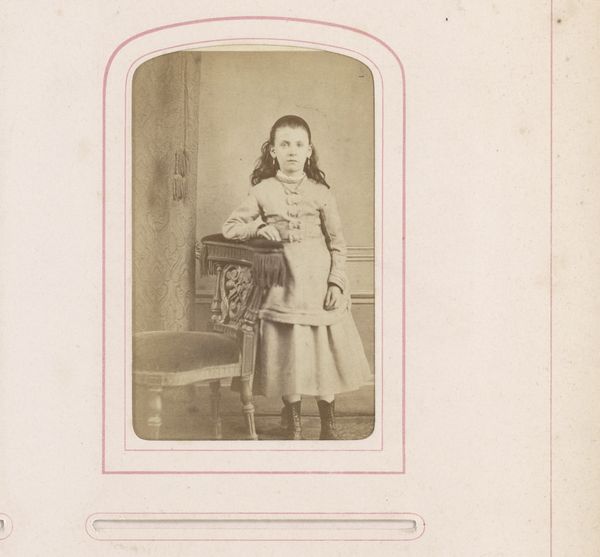
photography
#
portrait
#
aged paper
#
toned paper
#
16_19th-century
#
vintage
#
photo restoration
#
colourisation
#
archive photography
#
photography
#
historical photography
#
historical fashion
#
old-timey
#
19th century
#
genre-painting
#
realism
Dimensions: height 81 mm, width 52 mm
Copyright: Rijks Museum: Open Domain
Editor: Here we have "Portret van twee staande meisjes in klederdracht," or "Portrait of two standing girls in costume," a photograph dating from between 1867 and 1884 by Wegner & Mottu. There's such a striking contrast between the girls' expressions, and I find myself wondering about it. What do you see in this piece? Curator: This photograph, like many from the era, invites us to consider the roles and representations of women within a specific historical and social framework. Their 'klederdracht,' or traditional costumes, signify a particular regional or cultural identity, but how much agency did these girls have in that representation? Were they actively embracing their heritage, or were they being positioned as symbols of an idealized past? Editor: That’s a great point. It’s easy to romanticize these images, but we should question the power dynamics. Curator: Precisely! Consider the context: photography was becoming increasingly accessible, offering new ways to document and disseminate images of women. Who controlled that narrative? What were the intended audiences, and what messages were being conveyed about femininity, tradition, and national identity? The slightly forced nature of the portrait might signify the limits placed on female self-expression within the social mores of the time. What do you think that table and the little plant represents, if anything? Editor: It’s interesting how that plant could represent something about their domestic role, or it could just be set dressing. I never thought about the control of the image, especially thinking about how these girls look as though they might work as servants and have very little say about it. Curator: Exactly, by critically examining these elements, we can unravel the complex layers of meaning embedded within seemingly simple portraits and question our own assumptions about history, identity, and representation. Editor: That's given me a lot to think about, approaching historical images with questions about gender and agency offers a new perspective. Curator: Absolutely, seeing this work this way brings history into dialogue with current feminist perspectives, providing a deeper understanding of both.
Comments
No comments
Be the first to comment and join the conversation on the ultimate creative platform.
